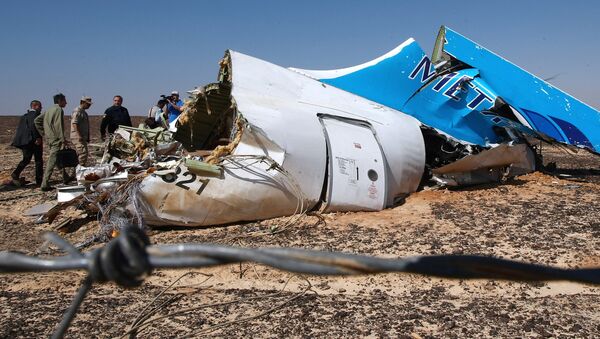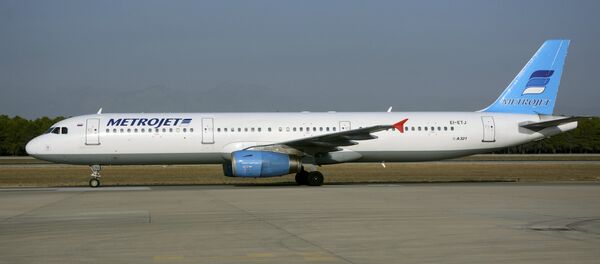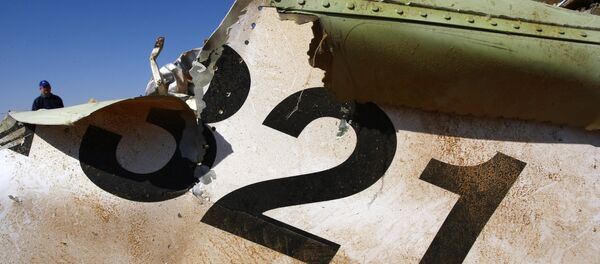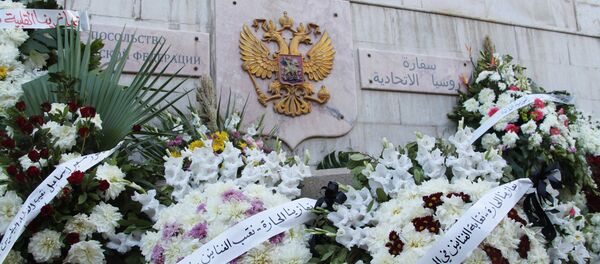On Monday, Kremlin spokesperson Dmitry Peskov said that it won't be possible to formulate an official reason of the Airbus A321 crash until the ongoing investigation into the accident is concluded. Meanwhile Egyptian President Abdel Fattah Sisi said the probe, conducted by the Interstate Aviation Committee (IAC), might take months to come up with an official conclusion.
Nonetheless, a number of versions why and how the plane crashed have already appeared in media. Here are some possible explanations of how the tragedy may have unfolded.
ISIL Terrorists
After the accident ISIL claimed responsibility for the crash on Twitter.
Nonetheless, speculations that the plane crash happened as the result of a terrorist attack are present, especially since the Russian airliner broke up in the air, according to Egyptian authorities.
"It's [ISIL shooting down the plane] unlikely, but I wouldn't rule it out," said James Clapper at the Defense One Summit in Washington, as cited by CBS News.
On Board Explosion
The prestigious US global intelligence company Stratfor speculated that a bomb explosion on board of the Airbus A321 could have been the possible cause of the accident.
"It seems that the most possible explanation for the downed plane is the existence of an explosive device onboard," Stratford said, thus rejecting the version of missile attack from the ground.
Someone could have carried an explosive device into the aircraft or loaded a bomb into the cargo hold. Security personnel often accept bribes in exchange for allowing passengers to avoid checkpoints while cargo security screenings are less strict than those in the United States and Europe, Stratfor said.
An explosion itself can't destroy the plane the size of the Airbus A321, but similar to the Pan Am Boeing 747, the bomb explosion could have caused depressurization due to the sudden drop of pressure and quickly led to the disintegration of the plane in the air.
So far, the ongoing investigation hasn't found any traces of explosive devices among the debris scattered around at the site of the crash in Sinai, a source close to the investigation told RIA Novosti.
Corrosion of Plane Parts
In both cases the areas, in which the fragments of the two planes were scattered on the ground, were in the shape of an ellipse — 8 km in length and 4 km in width for the A321 and for the smaller An-24, which crashed in Cherkessk, the ellipse was 10.5 km in length and 2.5 km in width.
Previous Damage to the Tail of the Plane
Another version related to a technical failure of the plane is born out of the fact that the Airbus A321 struck its tail on a runaway during an unsuccessful landing in 2001. After the incident, the aircraft was checked and after all its defects were repaired it was re-commissioned and allowed to go back in the skies. However, the damage to its tail during that incident or inadequate repair could have caused the crash in Egypt.
"Old metal parts, old aircraft that was already damaged. In this case, the plane touched the ground with its tail during a landing in 2001," Andrei Litvinov, a 1st class pilot who received the Honor of Excellence working for Russia's flag carrier Aeroflot, told Kommersant.
Sloppy technical procedures in the company could have led to mistakes in the repair process of the plane. It was reported that Kogalymavia apparently hadn't paid salaries to its employees for two months which could also mean that the company might have ignored some maintenance issues in the past, Litvinov said, according to Kommersant.





